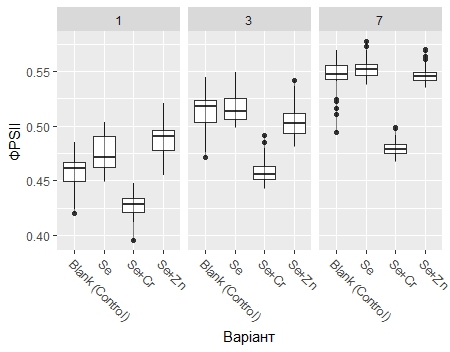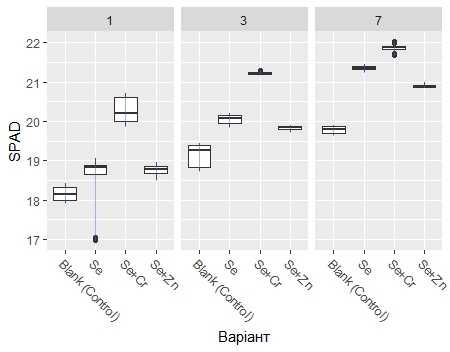Measuring algae and cyanobacteria
Measurements, Protocols & Macros
Tsai Lab
Nov 2018
Hello! I was wondering how you would recommend taking measurements of cyanobacteria and algae. I suspect that you could use a cuvette but it is unclear the effectiveness and where to attach it. I saw in the tutorials and in prior forums that there is a way to do so, but I can't seem to find a protocol on how to do this. Thanks, Trevor
David M. Kramer
Nov 2018
Hi Tsai Lab,
If you remove the little rubber rings (that squeeze the leaf) you will see that the leaf clamp can, indeed, hold a standard cuvette. In fact, we designed it to do so. You can get data that way.
You can also set up the device ,pre favorably for fluorescence measurements by removing the lower housing of the leaf clamp and re-positioning it so that the excitation and fluorescence detectors are at 90o to each other. HOWEVER, please consider this option to be a hack and that if you screw of the instrument, its on you ;-)
We have built a prototype version of MultispeQ that is specifically designed for cuvettes. and it works quite well, has cyano-specific wavelengths etc. It'd be interesting to see if there is sufficient interest in this to consider actually producing it.
Have fun!
Dave
Andriy Herts, Nataliia Herts
Nov 2018
Hi David. If I don't do it "re-positioning it so that the excitation and fluorescence detectors are at 90o to each other". Can I get correct parameters fluorescence from algae?
David M. Kramer
Nov 2018
In principle, yes. We have done a few tests, but have not explored it rigorously. One thing that can interfere with results are direct back-scatter of the measuring pulse, which can give you an offset in the fluorescence. I'd recommend testing it out with a series of chlorophyll concentrations to optimize. I'd love to hear about the results, and maybe we can figure out the best way to make it work!
Andriy Herts, Nataliia Herts
Nov 2018
Our result. Influense Se, Se+Zn, Se+Cr combination on fluorescence parameters. enter link description here
David M. Kramer
Nov 2018
Wow, that data looks great. Can you share some details, e.g. chlorophyll content? Also, I would strongly recommend using the new RIDES protocols, as they give much better ECS and P700 data. Anyway, thanks for sharing this. I hope it will inspire others to give it a try.
Best
Andriy Herts, Nataliia Herts
Nov 2018
Chlorophyll "a" content (mg/m3) on the 7 day of incubation. Blank - 142; Se - 193; Se+Zn -280; Se+Cr -176
Andriy Herts, Nataliia Herts
Dec 2018


7 days incubation (1,3,7) with Se, Se+Zn, Se+Cr. Phi2 increasing. Somebody know, why?
Habib-ur-Rehman Athar
Dec 2018
Have you drawn these Box and Whisker Plots using PhotosynQ platform or someone else software. Plots are nice and interesting. I think increase in SPAD value or chlorophyll contents per reaction center (algal growth and development with time) causing increase in Phi-PSII.
Habib-ur-Rehman Athar
Dec 2018
Andriy Herts, Nataliia Herts: 7 days incubation (1,3,7) with Se, Se+Zn, Se+Cr. Phi2 increasing. Somebody know, why?
Algal incubation with Se+Cr increased SPAD but it lower Phi-PSII .... ? It may implies to Cr inhibiting effect on PSII efficiency but not on PSII structure, chlorophyll biosynthesis, chloroplastic development.
Andriy Herts, Nataliia Herts
Dec 2018
Thank you for your opinion. I am using RStudio to build the Boxplots.
Andriy Herts, Nataliia Herts
Dec 2018
David M. Kramer: Wow, that data looks great. Can you share some details, e.g. chlorophyll content? Also, I would strongly recommend using the new RIDES protocols, as they give much better ECS and P700 data. Anyway, thanks for sharing this. I hope it will inspire others to give it a try. Best
What the best RIDES protocol for plant and especially for algae now?
Andriy Herts, Nataliia Herts
Dec 2018
Habib-ur-Rehman Athar: Algal incubation with Se+Cr increased SPAD but it lower Phi-PSII .... ? It may implies to Cr inhibiting effect on PSII efficiency but not on PSII structure, chlorophyll biosynthesis, chloroplastic development.
I think that is the root cause: "With the increase of biomass, the chlorophyll fluorescence absorbed and shaded by the medium also increased, leading to a more reduction of maximum fluorescence (Fm) compared to minimum fluorescence (F0), which resulted in a higher Fv/Fm (1−Fm/F0)".
Laura Lamilla
Jan 2023
David M. Kramer: Hi Tsai Lab, If you remove the little rubber rings (that squeeze the leaf) you will see that the leaf clamp can, indeed, hold a standard cuvette. In fact, we designed it to do so. You can get data that way. You can also set up the device ,pre favorably for fluorescence measurements by removing the lower housing of the leaf clamp and re-positioning it so that the excitatio...
Hello David,
I tried your recommendation, but I haven't been able to get any data, yet the device is not able to identify that it is supposed to start the measurements. I was wondering if you or anyone here has any further recommendations to measure microalgae on a cuvette, hopefully yes :).
All the best! Laura
Laura Lamilla
Jan 2023
Andriy Herts, Nataliia Herts: Our result. Influense Se, Se+Zn, Se+Cr combination on fluorescence parameters. enter link description here
Hello,
That seems great, I haven't been able to get any data,my device is not able to identify that it is supposed to start the measurements when I place the cuvette I was wondering if you or anyone here has any further recommendations to measure microalgae on a cuvette, hopefully yes :).
Thanks! Laura